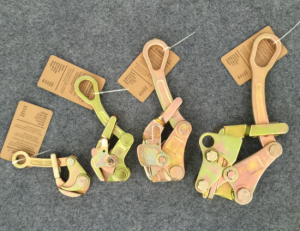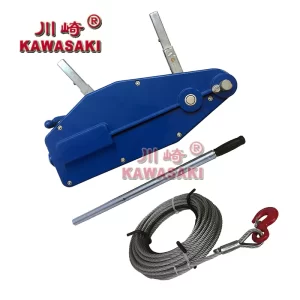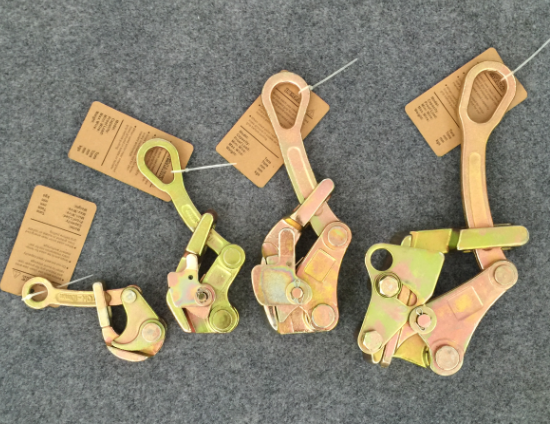Wire clamps are essential components in various industries for securing, organizing, and routing wires and cables. Their design, materials, and applications vary widely depending on the specific requirements of the task at hand. This article delves into the structure and uses of wire clamps, exploring their types, materials, manufacturing processes, and practical applications.
Structure of Wire Clamps
Wire clamps are designed to grip, hold, or secure wires and cables effectively. Their structure typically consists of the following elements:
- Body: The main structural component of a wire clamp, which provides the strength and stability necessary for clamping. It is usually made from materials like metal, plastic, or composite materials, depending on the application.
- Fastening Mechanism: This part secures the wire clamp in place. Common fastening mechanisms include screws, bolts, rivets, and adhesive backings. Some clamps also feature snap-fit designs for ease of use.
- Cushion or Insulation Layer: Many wire clamps have a cushioning layer made of rubber, silicone, or similar materials. This layer prevents damage to the wires or cables and provides vibration damping.
- Adjustment Features: Certain wire clamps are adjustable, allowing for flexibility in gripping wires or cables of varying sizes. These features include slots, grooves, or tension screws that enable customization.
- Mounting Options: Wire clamps may be designed for surface mounting, panel mounting, or free-standing use. Mounting options often include holes, brackets, or adhesive pads to accommodate different surfaces.
Materials Used in Wire Clamps
The choice of material for wire clamps depends on the application’s requirements, such as load-bearing capacity, environmental conditions, and durability. Common materials include:
- Metals:
- Steel: Offers high strength and durability, often used in heavy-duty applications. Stainless steel is particularly popular due to its corrosion resistance.
- Aluminum: Lightweight and corrosion-resistant, suitable for applications requiring ease of handling.
- Plastics:
- Nylon: Known for its flexibility, strength, and resistance to wear and tear.
- Polypropylene: Lightweight, resistant to chemicals, and cost-effective for general applications.
- Rubber and Silicone: Commonly used as cushioning materials to prevent wire damage and reduce vibrations.
- Composite Materials: These combine properties of different materials to provide enhanced strength, flexibility, and corrosion resistance.
Types of Wire Clamps
Wire clamps come in a variety of designs to cater to different needs. Some common types include:
- Standard Wire Clamps:
- These are basic clamps designed to hold wires and cables in place.
- They are often made from plastic or metal and are widely used in household and commercial applications.
- Adjustable Clamps:
- Feature adjustable mechanisms to accommodate wires of varying diameters.
- Commonly used in automotive and industrial settings.
- Cushioned Wire Clamps:
- Include a rubber or silicone lining to protect wires from abrasion or vibration.
- Often used in high-vibration environments like engines and machinery.
- Spring Clamps:
- Use a spring mechanism to apply consistent pressure on wires.
- Ideal for temporary or adjustable applications.
- Adhesive-Backed Clamps:
- Designed for quick and easy installation without drilling or screws.
- Suitable for lightweight cables in indoor settings.
- Cable Tie Clamps:
- Combine the features of a clamp and a cable tie for secure bundling.
- Used in wiring harnesses and organized cable layouts.
- P-Clamps:
- Named for their “P” shape, these clamps are commonly used for securing single wires or bundles.
- Often made from metal with a rubber lining.
Manufacturing Processes
The manufacturing of wire clamps involves several steps, depending on the material and type of clamp:
- Material Selection: Appropriate materials are chosen based on strength, flexibility, and environmental resistance requirements.
- Forming: For metal clamps, forming processes such as stamping, bending, and machining are used. Plastic clamps are typically made through injection molding.
- Assembly: Components like cushioning layers, screws, or mounting brackets are assembled.
- Finishing: Surface treatments such as coating, painting, or anodizing are applied to enhance durability and corrosion resistance.
- Quality Control: Each clamp undergoes rigorous testing to ensure it meets specifications for strength, flexibility, and environmental resilience.
Uses of Wire Clamps
Wire clamps find applications across numerous industries due to their versatility. Some of the most common uses include:
- Automotive Industry:
- Used for securing wiring harnesses in vehicles.
- Help manage cables in high-vibration environments such as engines.
- Construction and Infrastructure:
- Secure electrical wires and cables in buildings.
- Ensure neat and organized cable layouts in infrastructure projects.
- Electronics and Appliances:
- Hold internal wiring in place to prevent tangling and damage.
- Provide strain relief for power cords and connectors.
- Industrial Machinery:
- Organize and secure cables in manufacturing equipment.
- Reduce wear and tear caused by vibration and movement.
- Marine and Aerospace:
- Use corrosion-resistant clamps for harsh environments.
- Ensure reliable cable management in safety-critical systems.
- Renewable Energy:
- Secure cables in solar panels, wind turbines, and other renewable energy installations.
- Home and Office Use:
- Organize cables for computers, entertainment systems, and other devices.
- Prevent tripping hazards by keeping cables secured and out of the way.
Installation and Maintenance
Proper installation and maintenance of wire clamps are essential for their effectiveness and longevity:
- Installation Tips:
- Choose the right type and size of clamp for the application.
- Avoid over-tightening to prevent damage to wires.
- Ensure proper alignment to minimize stress on cables.
- Maintenance Guidelines:
- Regularly inspect clamps for wear, corrosion, or damage.
- Replace damaged clamps promptly to maintain safety and functionality.
- Clean clamps as needed to remove dirt or debris.

Innovations and Trends
The wire clamp industry continues to evolve with advancements in materials and design. Some notable trends include:
- Smart Clamps:
- Incorporate sensors for monitoring wire integrity and detecting issues like overheating or overloading.
- Eco-Friendly Materials:
- Use biodegradable or recyclable materials to reduce environmental impact.
- Modular Designs:
- Allow for easy customization and scalability in complex cable management systems.
- Lightweight Clamps:
- Develop lightweight yet strong clamps for applications in aerospace and automotive industries.
Conclusion
Wire clamps are indispensable tools for managing and securing wires and cables in various applications. Their diverse designs, materials, and mounting options ensure they can meet the demands of any industry or environment. Proper selection, installation, and maintenance of wire clamps can significantly enhance safety, efficiency, and durability in cable management systems. With ongoing innovations, wire clamps are set to become even more versatile and environmentally friendly, catering to the evolving needs of modern industries.

